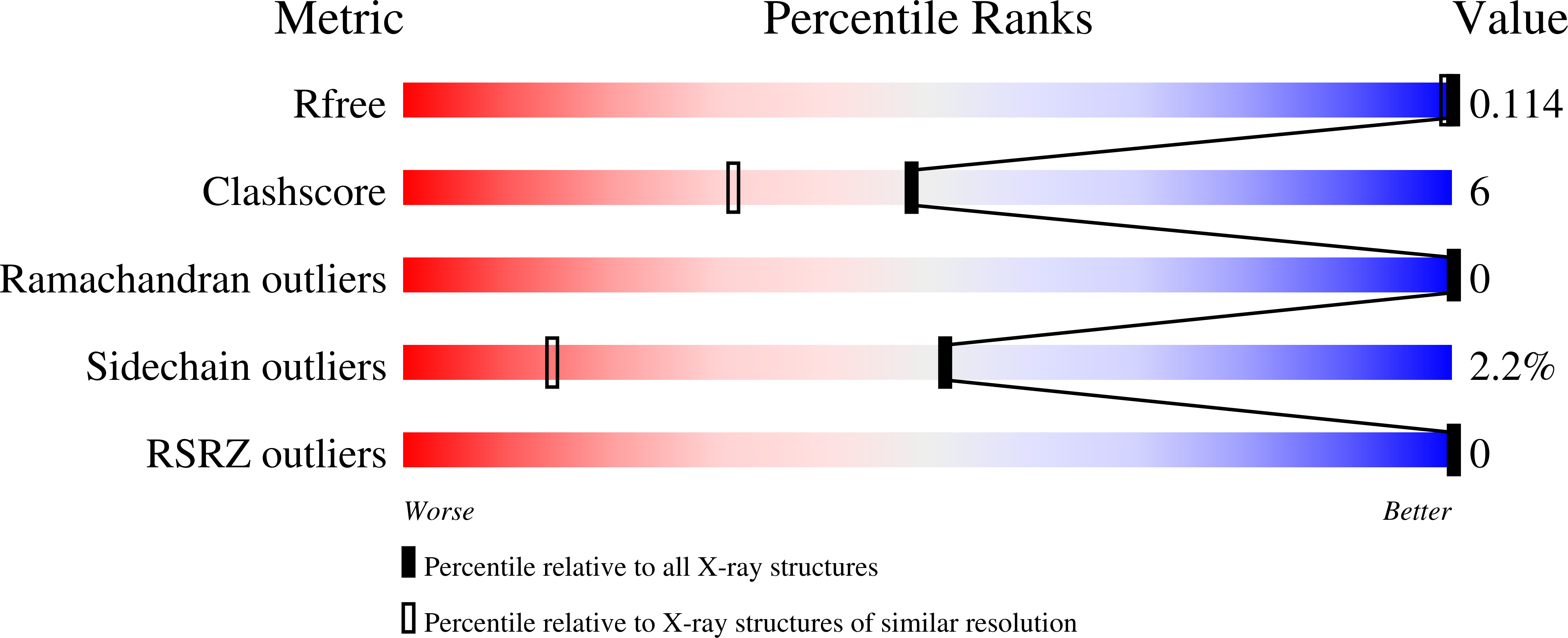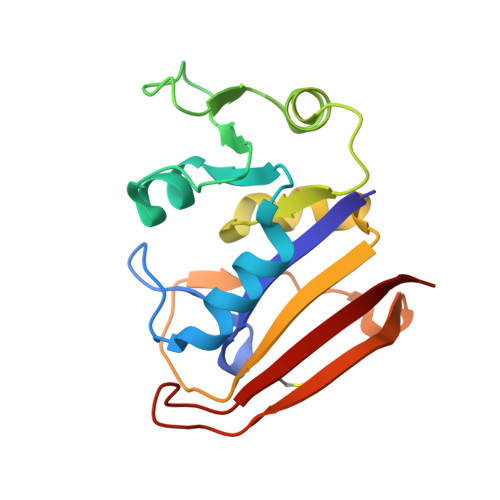Toward resolving the catalytic mechanism of dihydrofolate reductase using neutron and ultrahigh-resolution X-ray crystallography.
Wan, Q., Bennett, B.C., Wilson, M.A., Kovalevsky, A., Langan, P., Howell, E.E., Dealwis, C.(2014) Proc Natl Acad Sci U S A 111: 18225-18230
- PubMed: 25453083
- DOI: https://doi.org/10.1073/pnas.1415856111
- Primary Citation of Related Structures:
4PDJ, 4PSY, 4RGC - PubMed Abstract:
Dihydrofolate reductase (DHFR) catalyzes the NADPH-dependent reduction of dihydrofolate (DHF) to tetrahydrofolate (THF). An important step in the mechanism involves proton donation to the N5 atom of DHF. The inability to determine the protonation states of active site residues and substrate has led to a lack of consensus regarding the catalytic mechanism involved. To resolve this ambiguity, we conducted neutron and ultrahigh-resolution X-ray crystallographic studies of the pseudo-Michaelis ternary complex of Escherichia coli DHFR with folate and NADP(+). The neutron data were collected to 2.0-Å resolution using a 3.6-mm(3) crystal with the quasi-Laue technique. The structure reveals that the N3 atom of folate is protonated, whereas Asp27 is negatively charged. Previous mechanisms have proposed a keto-to-enol tautomerization of the substrate to facilitate protonation of the N5 atom. The structure supports the existence of the keto tautomer owing to protonation of the N3 atom, suggesting that tautomerization is unnecessary for catalysis. In the 1.05-Å resolution X-ray structure of the ternary complex, conformational disorder of the Met20 side chain is coupled to electron density for a partially occupied water within hydrogen-bonding distance of the N5 atom of folate; this suggests direct protonation of substrate by solvent. We propose a catalytic mechanism for DHFR that involves stabilization of the keto tautomer of the substrate, elevation of the pKa value of the N5 atom of DHF by Asp27, and protonation of N5 by water that gains access to the active site through fluctuation of the Met20 side chain even though the Met20 loop is closed.
Organizational Affiliation:
Jiangsu Key Laboratory of Integrated Traditional Chinese and Western Medicine for Prevention and Treatment of Senile Disease, Yangzhou 225001, People's Republic of China; Jiangsu Co-Innovation Center for Prevention and Control of Important Animal Infectious Disease and Zoonoses, Yangzhou 225009, People's Republic of China; Department of Biochemistry, College of Medicine, Yangzhou University, Yangzhou 225001, People's Republic of China;


















